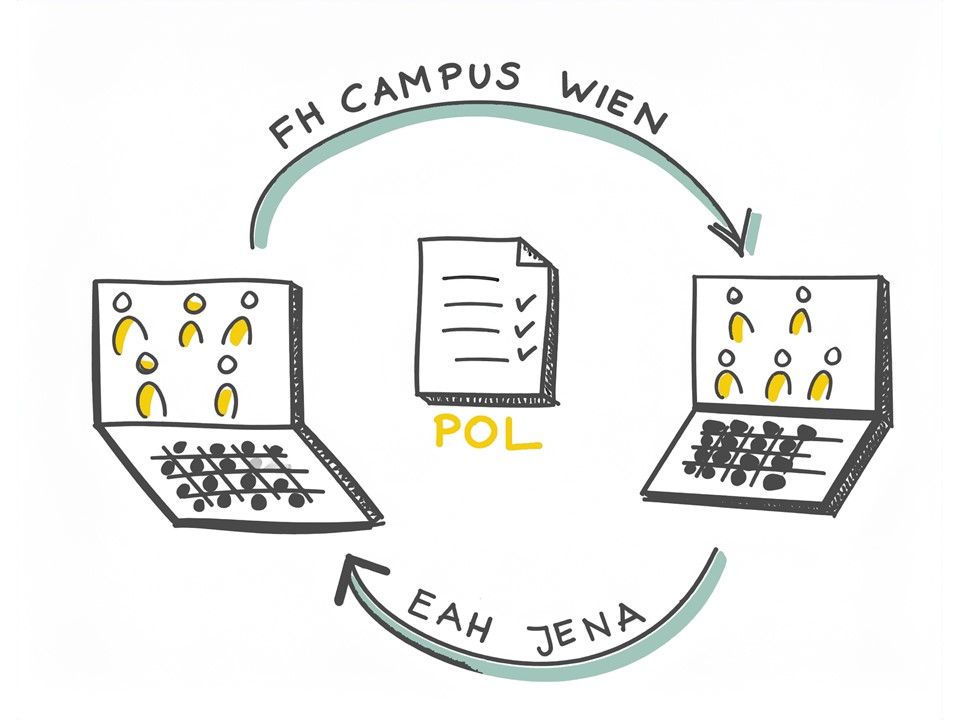Together with the FH Campus Wien, a three-hour seminar unit was developed for purely digital implementation in the field of health and care. The basis for this is the Problem-Oriented Learning (POL) method, which enables students to successfully transfer theoretical knowledge into practical knowledge. The POL method is a pedagogical strategy in which learners develop knowledge contexts and problem-solving skills. Using a complex problem, the so-called case vignette, the students work out results in small groups in a self-directed manner, while the lecturers supervise the groups during the learning process.
The transnational seminar unit deals specifically with the main topic of angiology (diseases of the arteries, veins and lymphatic vessels) and is part of the course "Physiotherapy for diseases of internal organ systems" - module "Fundamentals of physiotherapeutic care" at the EAH Jena.
The starting point for the learning activities in the POL seminar unit is the selection of a case-related problem which, due to its complexity, can only be solved within the given time with the help of the prior knowledge of other students. The prior knowledge of the students from Jena and Vienna combines different experiences, perspectives and physiotherapy practices. The cognitive capacity of the groups is effectively utilised for solving the task thanks to the deliberately international mix of small groups.
In both Vienna and Jena, around 20-25 students take part digitally and are divided into mixed groups. In preparation, scripts on aspects of disease development and introductory basics of physiotherapy in angiology as well as the access data for the online session are stored in the Moodle learning management system. In the POL seminar unit, the groups work on a case vignette in 3 steps on a digital whiteboard and in breakout rooms. A plenary meeting is planned after each step. While hypotheses about the case are collected in step 1, the students already plan a clinical examination in step 2 and derive specific treatment goals in step 3.
